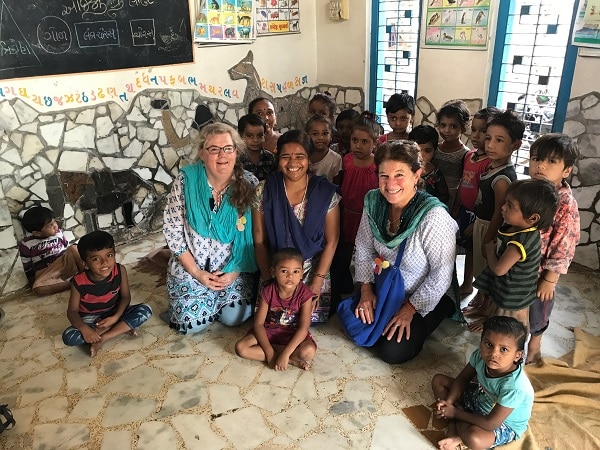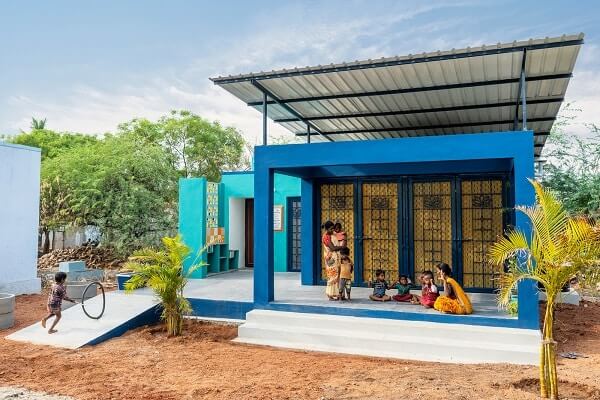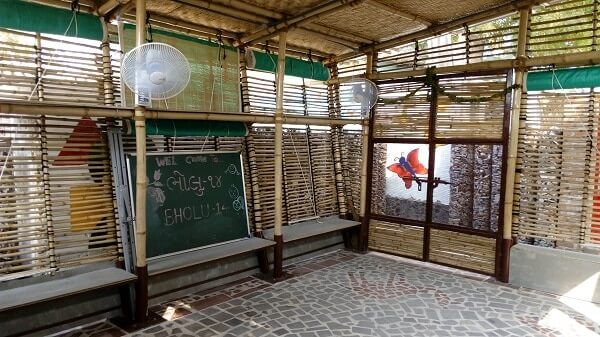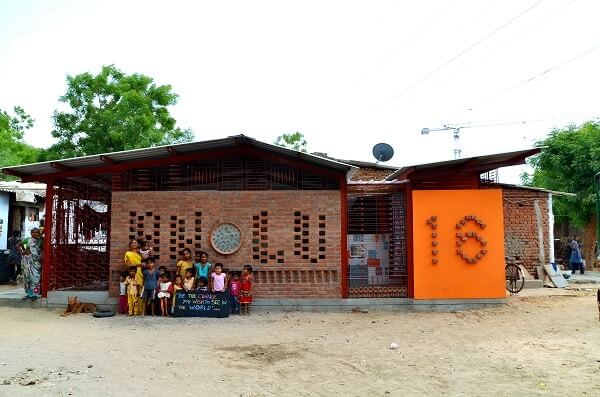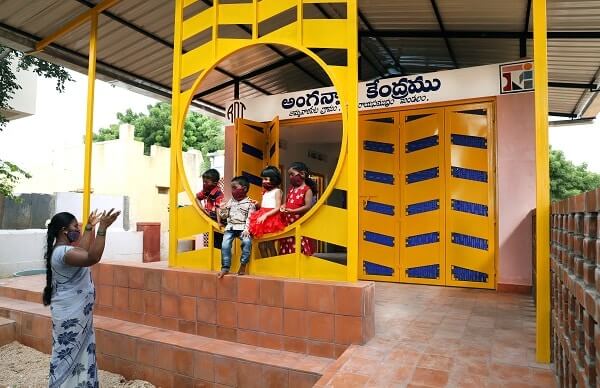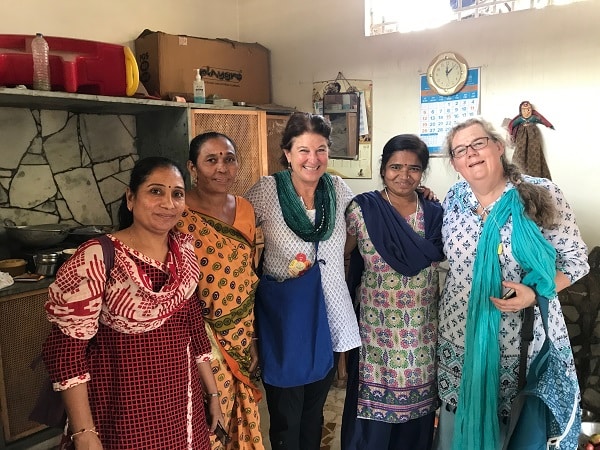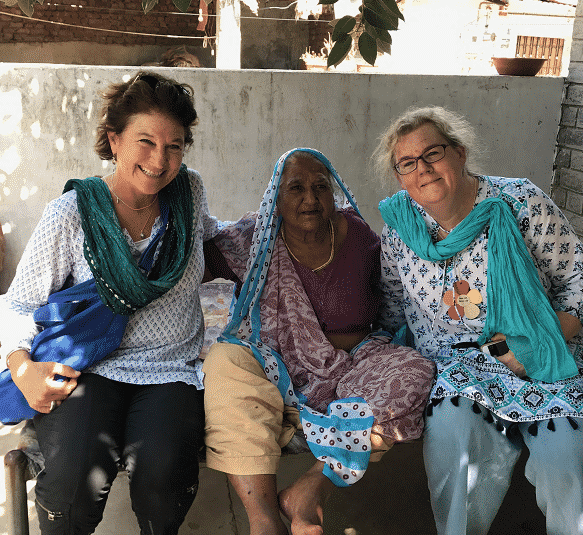Anganwadis, or rural childcare centres, have existed in India since the ‘70s, but they haven’t always been associated with beauty or comfort. Despite their noble purpose, they can be badly lit, hot, and many times neglected.
For over a decade, a group of Australian architects have been working on changing that notion, one school at a time.
“We decided to start with small interventions in Ahmedabad anganwadis, like improving ventilation,” explained Jane Rothschild, co-founder and project director of The Anganwadi Project. “Eventually, we decided to go bigger. We recruited volunteers from Australia and New Zealand to work on a project on-ground in India. For 6 months, from the planning phase to the final result, they really work with the community to understand their needs and deliver their vision.”
AT A GLANCE
- Sydney’s The Anganwadi Project has been building childcare centres in India since 2007
- Their projects in Gujarat and Andhra Pradesh successfully combine modernity with sustainability to assist disadvantaged communities
- Although impacted by the pandemic, they look ahead positively at stronger ties between the two countries
Jane describes an anganwadi, of which there are some 1.3 million nationwide, as more than just a pre-school.
“It’s generally considered an early learning centre and a source of meals for children between two to five years old, but it goes beyond that. It becomes a hub for the women and children of the village,” she told Indian Link.
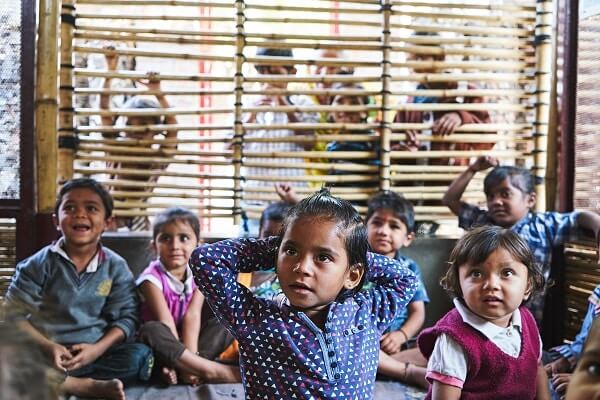
The Anganwadi Project grew out of Jane’s chance encounter with a young India-based designer through Architects Without Frontiers. Since 2007, the not-for-profit has become much larger than they could’ve imagined, with around 40 architects contributing till date.
“The reception has been really great. Everyone is thrilled that these anganwadis can be more than just an ordinary concrete building. The colours, open spaces and thoughtful plans around community needs have really sparked joy,” Jane shared.
Indeed, a look at their projects in Ahmedabad, Gujarat and Anantapur, Andhra Pradesh reveal bright, colourful, welcoming spaces that are bound to get creative juices flowing. From well-ventilated bamboo interiors and generous greenery to latticed metalwork and mosaic floors, the new buildings bring a modern aesthetic to rural constructions.
“Each anganwadi costs anywhere between $10,000 to $20,000 to build. Our ethos is to recycle, reuse, and repurpose local materials. Creating mosaics of free broken tiles, taking in old gates and windows, incorporating local art and mudwork, we’re making the most of what is available around us,” Jane elaborated.
Working in collaboration with India-based NGOs Manav Sadhna and the Rural Development Trust (RDT), The Anganwadi Project aims to prove that community-based designs are successful designs.
Changing lives on-ground
“There’s lots to be gained by closer ties between India and Australia. It’s an amazing country of contrast with big cities alongside traditional, rural areas,” said Sarah Schoffel, board member and architect with The Anganwadi Project.
In 2019, she helped design their first anganwadi in Andhra Pradesh in Bondalawada, Anantpur.
“The anganwadi was given the name Harivillu which means ‘rainbow’ in Telegu. It was chosen by the community,” she told Indian Link with a smile.
Developing Harivillu started with two weeks of pre-design, spending time with the teachers, children, and community to understand their lifestyle and needs. The architects then came back with colourful, graphic plans that would be easy for all stakeholders to understand. By the end of the first month, they were on-site every day (“with a good pair of boots and plenty of water”, Sarah chuckled) to supervise construction.
Years later, she’s still in touch with the Bondalawada community.
“I think we built some very close relationships with the teachers and mothers. For them, it seemed an empowering experience to give inputs on the design of the anganwadi that would directly affect them. I still speak with Lakshmi (one of the teachers) every 10 days or so,” Sarah said fondly. “When we completed the project, some of the children were still in preschool. Now we see them all grown up… it’s certainly a rewarding experience.”
She recalls how the children came from poor, lower caste backgrounds, making the anganwadi a necessary safe space for them to study and socialise without taunts or ridicule.
“As Australians, you might not agree with these structures, but you want to be respectful,” she offered.
READ ALSO: Selling succulents for leprosy relief in India
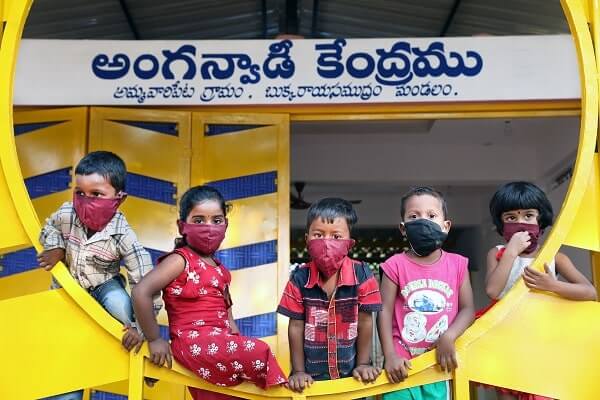
The way ahead
Last year, the pandemic forced construction to cease and most of the volunteers had to make their way back to Australia. Still, there was a silver lining: they managed to complete the construction of one anganwadi, Harivillu 2, in Ammavaripeta, Andhra Pradesh.
“COVID-19 definitely impacted our work, but we learnt to continue our efforts remotely,” Jane explained. “Our partner organisations also worked during this time on helping migrant workers who had lost their jobs during lockdown.”
Like many of the volunteers, she looks forward to visiting the sites and communities once again when the situation improves.
“I’ve always had a deep love and appreciation for the country. I first travelled to India when I was 25, it’s always felt like my second home. I’m keen to visit again when I can,” she said.
Read more about The Anganwadi Project and how to get involved here.
READ ALSO: Aussie social worker struggles to keep Pune school afloat
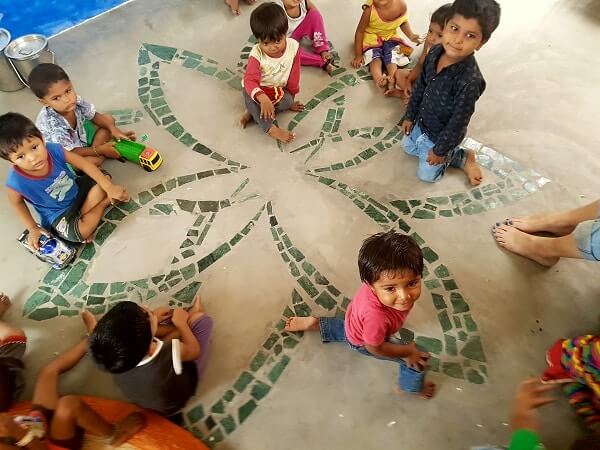
Link up with us!
Indian Link News website: Save our website as a bookmark
Indian Link E-Newsletter: Subscribe to our weekly e-newsletter
Indian Link Newspaper: Click here to read our e-paper
Indian Link app: Download our app from Apple’s App Store or Google Play and subscribe to the alerts
Facebook: facebook.com/IndianLinkAustralia
Twitter: @indian_link
Instagram: @indianlink
LinkedIn: linkedin.com/IndianLinkMediaGroup



